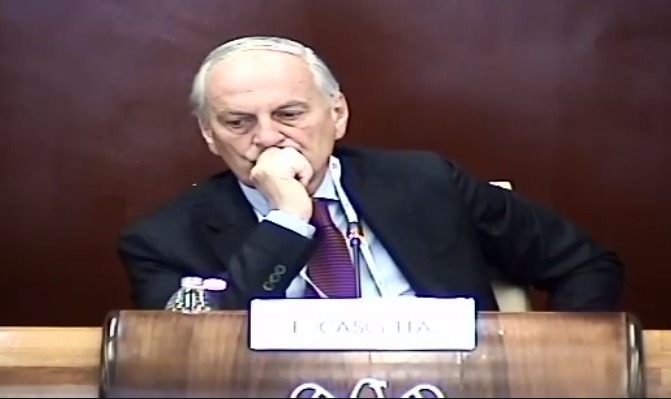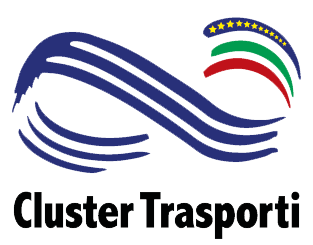Biomethane & Hydrogen: the conference of Cluster Trasporti on fuels of the future

Published 13 April 2022
The current geopolitical crisis has made the problem of the differentiation of energy resources even more pressing, while we are already called to answer the challenge of decarbonisation by the deadlines of the European Union. It is becoming increasingly crucial to focus decisively on the development and use of alternative fuels to follow up a real energy and environmental revolution, which requires the joint commitment of policy makers, production chains, managers and distributors of fuels.
These are the themes at the center of the conference “Biomethane & Hydrogen – two enabling technologies for sustainable mobility”, organized by Cluster Trasporti Italia, to make the point about research and development projects on alternative sources and systems of power for mobility and transport in our country.
The meeting has taken place a few hours after the signing of the agreement between the Italian Prime Minister Mario Draghi and the Algerian President Abdelmadjid Tebboune, about increasing the quantity of gas transported to Italy with more volumes of methane in 2023- 24: the Cluster is evaluating the possible implications in terms of supplying green hydrogen to the mobility network.
The need for an “eco-rational” approach
The aim of the discussion was to take stock of the state of the art of the production and distribution of alternative fuels in our country and to identify future research and innovation trajectories, also to efficiently direct the available resources, while maintaining an “eco- rational ”, as suggested in his speech by the President of the Cluster Ennio Cascetta.
“It is necessary to be eco-rational in a moment of uncertainty like the present one – underlined Cascetta -. Environmental sustainability must be achieved in a rational way, starting from the fact that the European objectives of reducing CO2 emissions by 55% by 2030 are very ambitious for the world of transport and logistics, which are hard to abate “.
To identify development paths of conscious innovation towards these objectives, the Cluster has launched the Paths-to-2030 study which aims to involve research institutions, transport operators and the business world. The first step of the project is to build a certain and incontrovertible data base on the quantity of emissions produced by road transport – in order to be able to effectively evaluate the real margins of possible reduction based on the objectives set by the EU – information currently not available with certainty but essential for any future reasoning, incentive and containment policy.
“The Cluster – added Cascetta is a neutral entity capable of developing a dashboard of routes designed according to the freight and people transport operators who must implement them, also with a view to orienting incentive policies and legislative interventions “.
Green hydrogen and biomethane strategic for the European energy system
The conference was attended by representatives of institutions, research bodies, companies and managers of energy and alternative fuels – in particular green hydrogen and biomethane – who discussed ongoing projects, relevant legislation, perspectives for research and innovation. On the part of the speakers there was a substantial harmony in recognizing that there is a lot of work to be done, essentially on two main points: the reduction of the costs of production and distribution of alternative fuels, in particular hydrogen, and the need to streamline and standardize legislation and bureaucracy, in order to have clear rules that can encourage investments in the sector.
“Green hydrogen represents one of the pillars of the European energy system from a Green Deal perspective, and therefore for the transport system. Research and innovation are essential to improve performance, durability and upscaling of technologies, as well as to reduce the cost of hydrogen on the market “. Carlo Beatrice, research manager for the Institute of Sciences and Technologies for Sustainable Energy and Mobility (Cnr-Stems), underlined in his speech the importance of this fuel as an alternative solution for the medium and long term.
He then illustrated the strengths of biomethane as a renewable energy vector for transport: “it is flexible and programmable because its production can be partly managed over time and its distribution integrates perfectly with the existing natural gas network, both in the Gnc network than that of LNG “.
The importance of the infrastructural network
Although Italy has a lot to recover from an infrastructural point of view, we can count on a distribution network of over 100 biomethane plants, the largest in Europe, as pointed out by Andrea Arzà, President of Federchimica Assogasliquidi. Arzà explained that we are paying the cost of choices (not) made in the past and that sustainability cannot be separated from the diversification of energy sources and carriers. However, we can expect biomethane production to grow consistently in the near future also thanks to the investments envisaged by the PNRR.
Andrea Rossetti, President of Assopetroli also insisted on the centrality of the distribution network: “A network that anticipated demand with respect to the development of the circulating fleet, in slower evolution”, he stressed. Rossetti, asks for urgent and extraordinary measures to remedy the imbalance in demand which is taking shape due to the energy crisis, a reversal of the trend with respect to the processes previously implemented in the transition path towards diversified sources of energy supply.
Streamline bureaucracy and reduce costs
Massimo Beccarello, Senior Adviser Energy Transition Confindustria, drew attention to the need to work on a national regulatory plan for an effective strategy for the development of biofuels, in particular for the production of green hydrogen (from renewable sources) for which it is essential to unblock territorial vetoes. A similar hope was also expressed by Francesca Paludetti, SAPIO Chief Corporate Development Officer, who then highlighted all the critical issues deriving from the lack of clear rules that blocks investments together with higher production and distribution costs.
The bureaucracy problem was also at the center of the speech by Giuseppe Fedele, Vice President Federmetano, who underlined in the face of this criticality the important role that biomethane can have in introducing hydrogen in the energy economy. It could in fact – he explained – begin to inject hydrogen into the network by mixing it with biomethane.
Michele Ziosi, Senior Vice President Institutional Relations & Sustainability of Iveco, spoke on behalf of the manufacturers, about the work to capitalize on the experience in treating internal combustion engines with gaseous fuels even with hydrogen technology.
Ziosi underlined how essential it is to apply an integrated institutions-industry approach that provides a parallel development between infrastructure and technology for the construction of new vehicles with alternative fuel. He concluded asking for the introduction of reward mechanisms for the use of biofuels in combustion engines.


